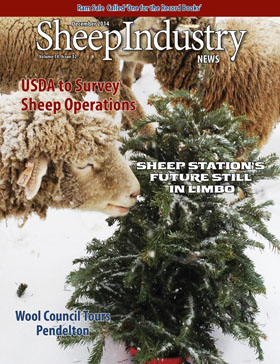To View the December 2014 Digital Issue — Click Here
Packing and Selling of Meat has Seen Major Shift
by Clint Krebs
Last month I talked about a few of the changes in production practices our industry has made over the last 150 years. It led me to also think about the changes our customers have made over time.
For example, there are probably not too many people who are still cooking on a wood stove, but I have eaten plenty of meals cooked over wood. In fact, I have eaten enough of them to know that when the cook asked you to bring in some wood from the wood box – or to make sure the wood box was always full – you didn’t ignore the request.
You also never talked about something being overcooked or under-cooked – you just ate it – and I can say it all tasted good.
Today’s cooks, with their time-bake ovens, thermostats, multiple heat settings and burners, microwaves, dishwashers, and food processors – would probably find cooking on the old Majestic Stove with the two warmer ovens overhead, and maybe water piped into the back so you had some hot water to wash dishes, to be quite challenging.
So cooking is easier today, but what are customers buying? Frozen vegetables instead of canned, all kinds of fresh fruit instead of dried, everything imaginable in prepared food, from taco shells to pie crusts. You have to search in today’s supermarket to find lard, but the pork industry is still selling plenty of lard to companies who are making our food. We are all aware of the fast food industry and the huge portion of the meals they provide to today’s consumer.
PROBABLY THE BIGGEST CHANGE in what our customers are eating today came from the change made from selling meat as whole carcasses to selling it as boxed primal cuts.
The sheep industry brought the first Cryovac machine into the United States from Europe in the mid 1960s, a change all other meat processors have now adopted. I remember when all grocery stores used to have a band saw and a cooler with carcasses hanging in the back. The consumer from yesterday would request a certain cut of meat and the butcher would cut it up on his wooden butcher block and then wrap it in paper.
Today, there are very few carcasses sold – and I’m not just talking about lamb. I’m talking about all meats. Just try to buy a whole chicken. We have even moved beyond, boxed primal cuts, which still require some work from the local butcher, to “case ready” products and atmospheric-controlled packaging.
All of these changes have made selling meat more efficient and safer. However, it has made a huge change from eating what you had on hand or in the pantry or root cellar to eating what the grocery chains wants us to eat. Today, stores are able to put thousands of products on their shelves (the average number of items in 2013 was 43,844), and they use this ability to influence every one of our choices.
A customer might go to the store wanting to buy lamb chops, but if the store’s profit margin is greater on pork chops the meat buyer makes a choice of putting the pork out instead of the lamb.
Maybe the bakery department enticed our lamb buyer to spend his money on maple bars (higher profit margin) before he got to the meat case. Stores have to be very good at this, or they are bought out by a different store that is better at marketing.
A meat salesman who has been selling lamb his whole life told me when he first started selling lamb he had over 200 meat buyers every week; now he has seven, but sells more meat. The “mom and pop” stores have been “bought out” or “run out” by the major chains.
THE HOLIDAYS ARE COMING up once again, and from everyone here at Krebs Livestock we would like to wish everyone a Merry Christmas and a Happy New Year. Until next time, I would like to leave all my fellow sheep producers with this question: “Why did the three Shepherds leave their flocks grazing in the hills, to go to Bethlehem to witness the birth of Jesus”?


